Kingdom Animalia Clade Dinosauria Clade Tetanurae Rank Genus | Class Reptilia Suborder Theropoda Phylum Chordata Order Saurischia | |
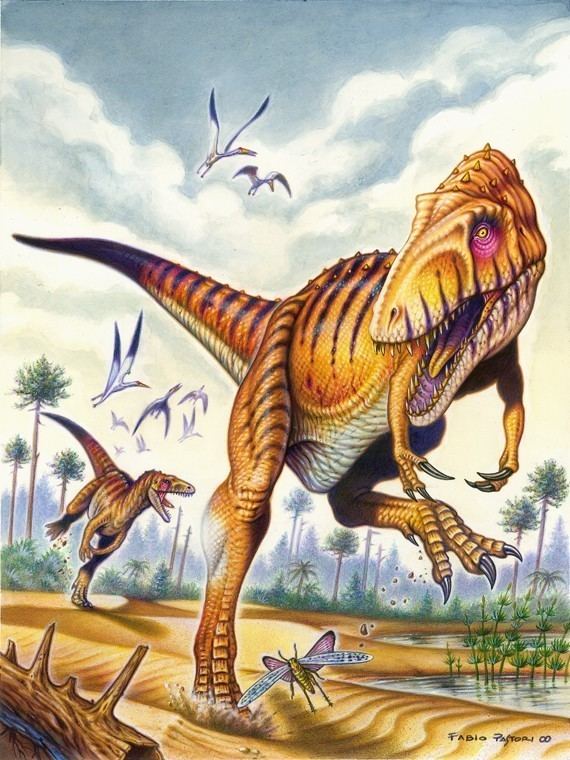 | ||
Similar Pterospondylus, Sarcosaurus, Euskelosaurus, Duriavenator, Lusitanosaurus | ||
Tribute to saltriosaurus
“Saltriosaurus” (Saltrio lizard) is the informal name for a theropod dinosaur that lived during the Sinemurian stage of the Early Jurassic of what is now Italy. Although a full skeleton has not yet been discovered, “Saltriosaurus” can be considered a bipedal predator, up to 7 metres (23 ft) long. “Saltriosaurus” can be considered the earliest known Tetanuran of Europe.
Contents
- Tribute to saltriosaurus
- Dilophosaurus vs saltriosaurus activate annotations
- Description
- Discovery and naming
- Taphonomy
- Classification
- Palaeoecology
- References
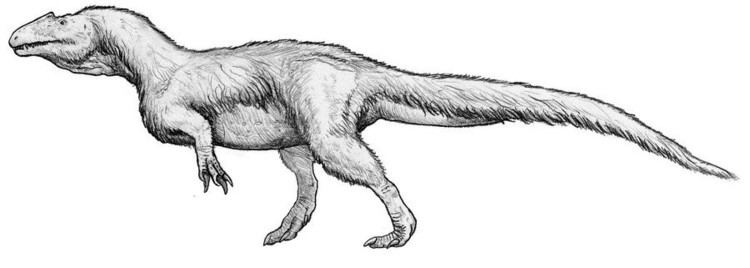
Dilophosaurus vs saltriosaurus activate annotations
Description
Very little is known about “Saltriosaurus”. It is thought to have been a large, bipedal carnivore that resembled Allosaurus, and has been estimated at 7 metres (23 ft) long and 500 kilograms (1,100 lb) in weight, with a 70 centimetres (28 in)-long skull and 7 centimetres (2.8 in)-long teeth (judging by the single tooth found). The arms are well developed and likely end with three clawed digits.
Discovery and naming
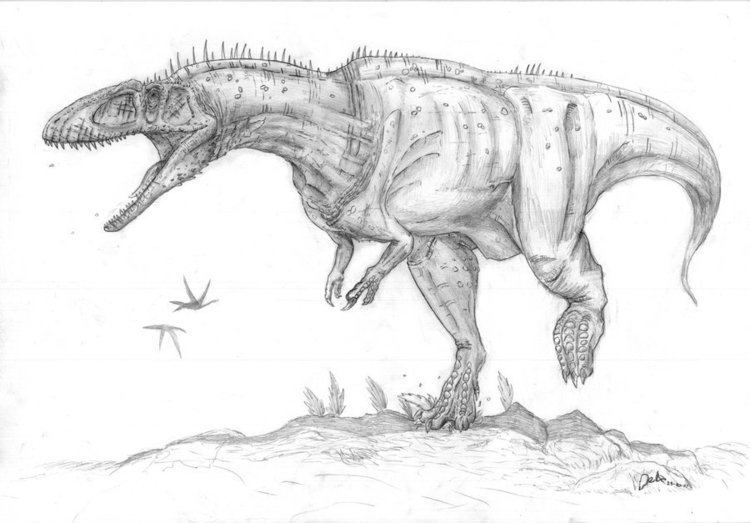
“Saltriosaurus” was found in 1996, when Angelo Zanella discovered its remains in a quarry in Saltrio, in northern Italy. “Saltriosaurus” likely died on the shores of an ancient beach before being washed out to sea. About ten percent of the skeleton has been discovered, including a tooth, fragments from the dorsal ribs and scapula, a well preserved but incomplete furcula, humeri, metacarpal II, phalanx II-1, phalanx III-1, phalanx III-2, manual ungual III, proximal fibula, distal tarsal III, distal tarsal IV (119 bones in total).
Taphonomy
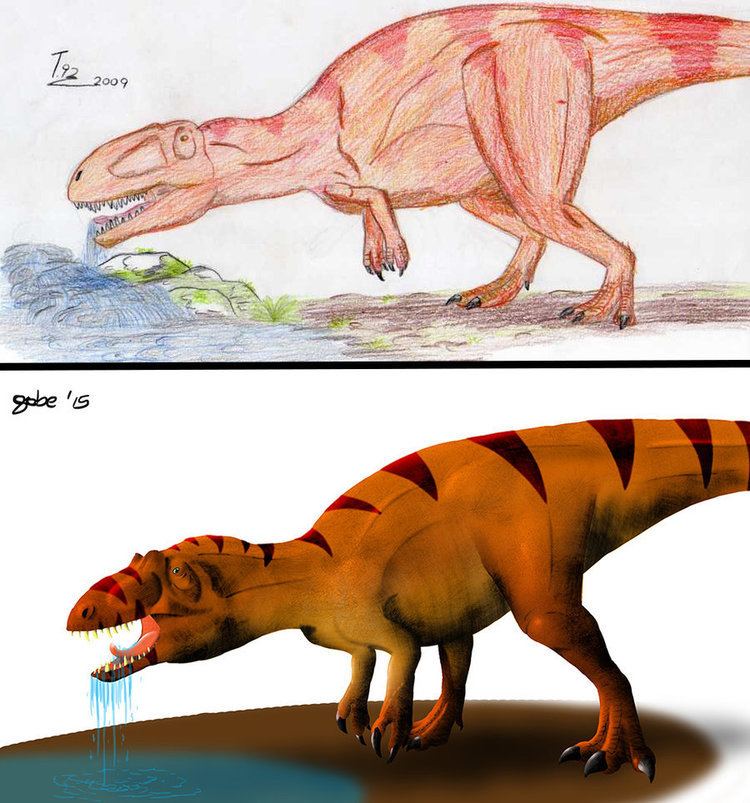
After death, the skeletal remains suffered from prolonged transport, during which many bones were lost. Although "Saltriosaurus" was not aquatic, the environment in which the carcass was deposited was likely pelagic, judging by the associated ammonites. The locality is also rich in crinoids, gastropods, bivalves, brachiopods and bryozoans.(Lualdi, 1999) Deposition occurred on a slope between a shallow carbonate platform and a deeper basin. Various scratches, grooves, and striations indicate that the carcass was subject to scavenging by marine invertebrates.
Classification
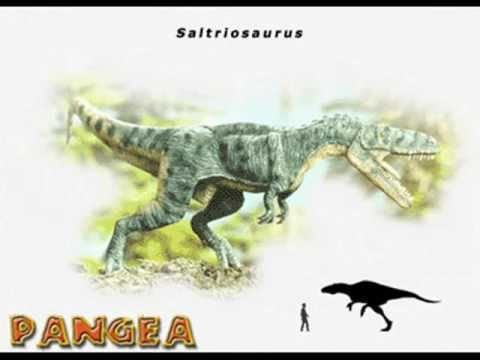
The precise systematic position of “Saltriosaurus” is uncertain, with an assignment to a more general Theropoda often used for simplicity. Dal Sasso originally assigned "Saltriosaurus" to Tetanurae. He later considered that it may represent an allosauroid, although in either case it would predate other members of the clades by roughly 20-30 million years. Benson considered it a member of Coelophysoidea in his review of Magnosaurus.
The presence of a wishbone may suggest that “Saltriosaurus” is a member of Tetanurae, although wishbones have been reported from coelophysoids. Several features point to allosauroid affinities; the size and morphology of the preserved elements of the right hand suggest that "Saltriosaurus' had only three digits on its hands, as seen in allosauroids but not in ceratosaurs (which retained four digits); and the degree of supination enabled by the phalanges is also reduced relative to ceratosaurs and other, more basal theropods. However, Dal Sasso also noted that the first phalanx of the second digit is reminiscent of ceratosaurs, and the humerus recalls that of megalosaurids.
Palaeoecology
The Ammonites from the Saltrio Formation, in which "Saltriosaurus" lived, allow the formation to be dated to the mid-Sinemurian. The dinosaur probably lived in emersed parts of carbonated platform or an area to the northwest, whose presence had never been established. The latter possibility was suggested by Lualdi (1999), which analyzed the local geology based on the presence of terrestrial plants and terrígeno content (sands from igneous or metamorphic rocks exposed to erosion sub-aerial) in the limestones. Land Plants are essentially represented by Leaves and small branches of Araucarianas and Bennettitales, the typical flora of the Mesozoic early. However, plants and sand (which refers are not very abundant) can be carried by wind and ocean currents and, according to the most current paleogeographic maps, truly continental land located closer these Jurassic times lower were the Mountains of Sardinia, Corsica, distanced many tens of kilometers WNW.
The presence of large dinosaurs, carnivores and herbivores in various icnojazidas the lower Jurassic (Hettangian - Sinemurian) in the province of Trento, around 160 km east of Saltrio, allows you to change the traditional view of palaeoenvironments and paleogeography of the region, considered a tropical sea with small islands of the atoll type. The Footprints and tracks are preserved in tidal carbonates deposited in a relatively narrow carbonated platform, Carbonated Platform of Trento, flanked to the east and west by relatively deep marine basins. Huge theropods could not / could live in an atoll. Large areas had to be emersed to provide food and fresh water. And their herbivorous prey needed land with vegetation. The presence of Vulcanodontids, Cetiosaurs, Primitive Sauropods, Heterodontosaurids, Scelidosaurs, etc., have been reported from the Calcari Grigi Group.
"It is more likely that the Peri-Adriatic Platforms worked with temporary continental bridges that connected with Laurasia Gondwana in central Tethis, allowing migration between the two hemispheres and colonization of local coastal habitats." "During the marine transgressions, some of these lands were isolated, implicating genetic Mutations in their terrestrial faunas, with typical biological consequences, as endemism and possible dwarfism".
